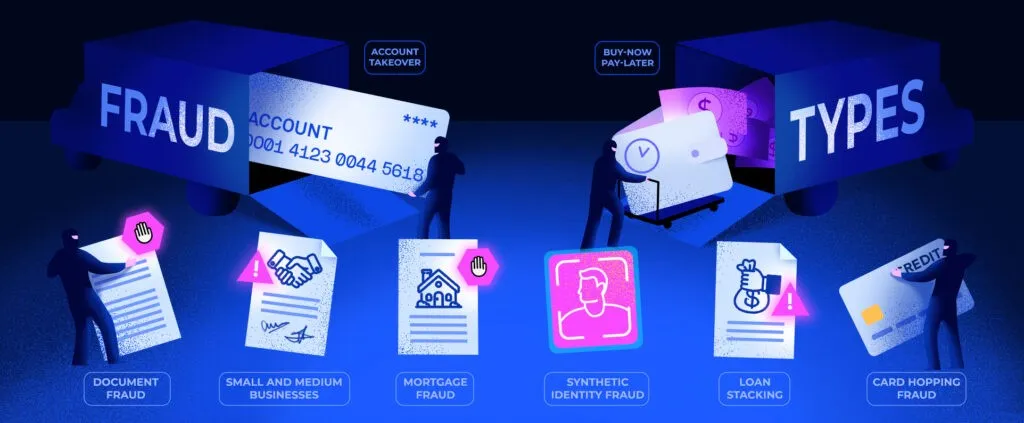As technology continues to advance and evolve, so does the sophistication and variety of fraudulent activities. It is estimated that by 2026, credit card fraud alone will reach $43 billion worldwide. This dynamic environment presents a significant challenge for financial service providers who must constantly adapt and innovate to stay one step ahead of fraudsters. Failing to do so risks being outmaneuvered and exploited, leading to substantial financial losses and reputational damage.
In this article, we’ll dive into the critical issues facing lenders and fraud, discussing how lenders can enhance their fraud detection and prevention mechanisms in response to the changing digital landscape. We’ll explore the need for a proactive and dynamic approach to fraud prevention, one that evolves in tandem with technology.
We’ll also look at the power in leveraging customers' transactional data as a way to mitigate fraud. By harnessing the insights gleaned from this data, lenders can not only detect fraudulent activities more effectively but also predict and prevent potential fraud before it occurs.
Fraud types and trends to watch out for
- Synthetic identity fraud: Fraudsters combine stolen and fake identity information to create “synthetic” fake identities
- Account takeover: Stolen credentials give fraudsters access to a real account. They then change the contact information and take control of the funds.
- Card hopping fraud: Using stolen credentials to open new credit card accounts to get cash bonuses, reward points or other offers.
- Buy-now-pay-later (BNPL) fraud: Using stolen and verified credentials for BNPL transactions, making 100% profit when they resell the received items.
- Loan stacking: Stacking multiple loans into a person’s name (either stolen or fraudulent identity) simultaneously with no intention of paying the loan back.
- Mortgage fraud: Using falsified information to obtain a mortgage or a larger loan amount than would be approved based on true data.
- Document fraud: Attempts to secure a loan using fake or altered documents ranging from altered to complete forgeries.
- Small and medium-sized businesses (SMB) fraud: SMB fraud is speculating on behalf of real or fake identities associated with a business and can vary in different forms from payment fraud, account origination fraud, to commercial loan fraud, and more.

Fraud detection challenges facing lenders
Common fraud prevention methods such as KYC and/or identity verification, income verification, and digital onboarding do a good job of slowing down fraudsters, but they’re not sufficient enough to identify all key fraud signals - especially for first-time borrowers or new clients. This is why it’s integral for lenders, especially digital ones, to take a more comprehensive approach to fraud detection.
A comprehensive approach to fraud mitigation can include cross-referencing data across various sources, as well as routing applications for manual fraud reviews. These methods allow for a more in-depth analysis of potential fraudulent activities and can significantly aid in fraud prevention.
However, there are limits to implementing these methods, as they can be costly, time-consuming, and not always scalable or foolproof. Furthermore, not every business can afford sophisticated fraud analytics and modelings (such as predictive models powered by AI), meaning they can be left vulnerable to ever-evolving fraudsters.
Fraud mitigation for lenders
Let’s take a look at the different types of fraud mitigation that currently exist:
Dual process methodRequires information from two reliable sources to verify either name and address, name and date of birth or name and existence of a financial account. Sources can include: government-issued photo ID and statements, letters, certificates, forms and other documents provided by reliable sources, such as government (e.g., property tax assessments, government benefit statements, utility bills) and financial entities (e.g., bank account statements, credit card or loan statements, processed cheques, micro-deposits)Dual biometric verificationTrue to its name, a user must provide a biometric method of verification, such as facial recognition and/or fingerprints in addition to passwords as part of their digital loginMulti-factor authentication (MFA)An authentication method that requires the user to provide two or more verification factors to gain access, such as a password plus an authentication appIncome verificationTraditionally, this can be an income verification report, a document from one’s employers, or other supporting documents to show verifiable income. Data aggregation is the most reliable way of collecting income verification as it connects directly to an applicant’s bank accounts, making forgeries and fraud more difficultAccount historyAn account history is a chronological record that tracks all the money coming in and going out of a bank, credit card, or investment account. It's a tool that government bodies use when they're looking into questionable financial behavior. Banks and other financial institutions monitor these histories to catch any strange or potentially illegal activities, such as identity theftDocument tampering detectionMachine learning models enable lenders to use AI to identify trends in data and documents. Automatic document review, such as Flinks Upload, facilitates the ability to quickly flag documents that may be fraudulent. This includes detecting document tampering based on abnormalities or missing data. Automation can help lenders identify numerous types of fraud, from loan fraud and financial fraud to document fraud and mortgage fraud.
Leveraging data for fraud mitigation
Transactional data is a reliable way of capturing key insights and behaviors that are integral for fraud analysis and prevention. This includes:
- Payroll data: income streams, breakdowns, and frequencies
- (Re)payment history: advanced, timely, or overdue payments to bills
- Deposit trends: increasing, decreasing, or consistent month over month
- Flagging transactional items: gambling spending, NSFs, cash advantages, buy-now-pay-later (BNPLs), and so on
- Data aggregation and enrichment: cash flow analysis
There are other types of data beyond transactional data that can be leveraged or more accurate risk profiling. This is often referred to as “alternative data” and it captures information and insights that can't be found with transactional data alone. This includes:
- Social profile data: social media, other online platforms
- Email, phone and IP analysis
- Bills: utilities, telecom, rental payments data, and so on
Why fraud detection and prevention matters
- The detection and prevention of fraud is beneficial for both lenders and borrowers
- Reducing exposure to fraud means less money lost and increase in revenues
- Minimizing manual entry errors and manual reviews leads to better productivity
- Better borrower experiences and higher conversions as clients feel secure working with your business




